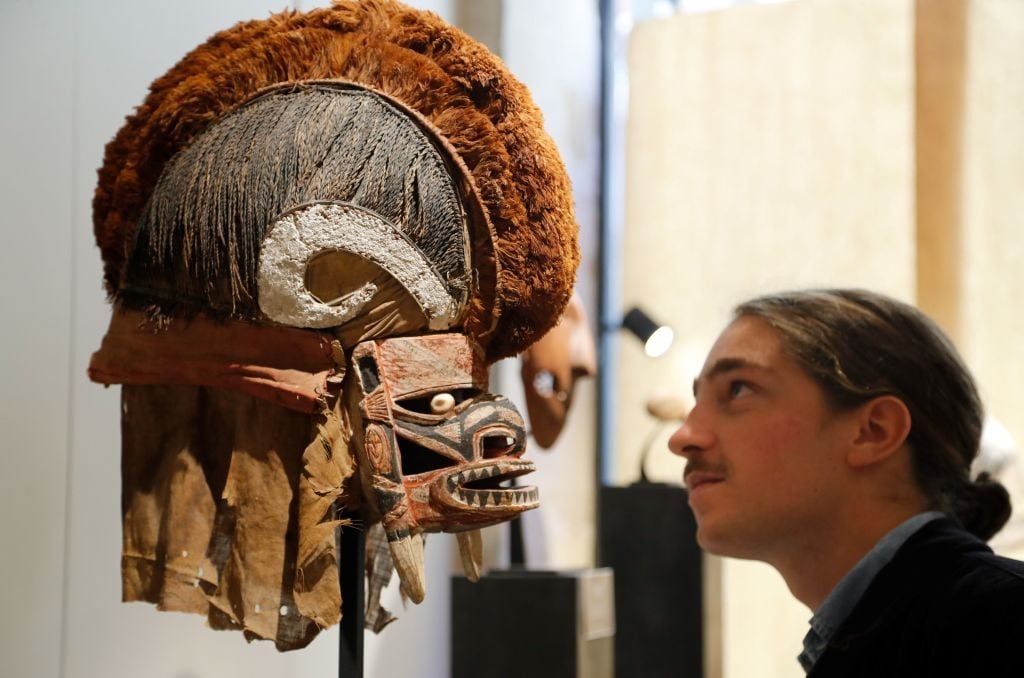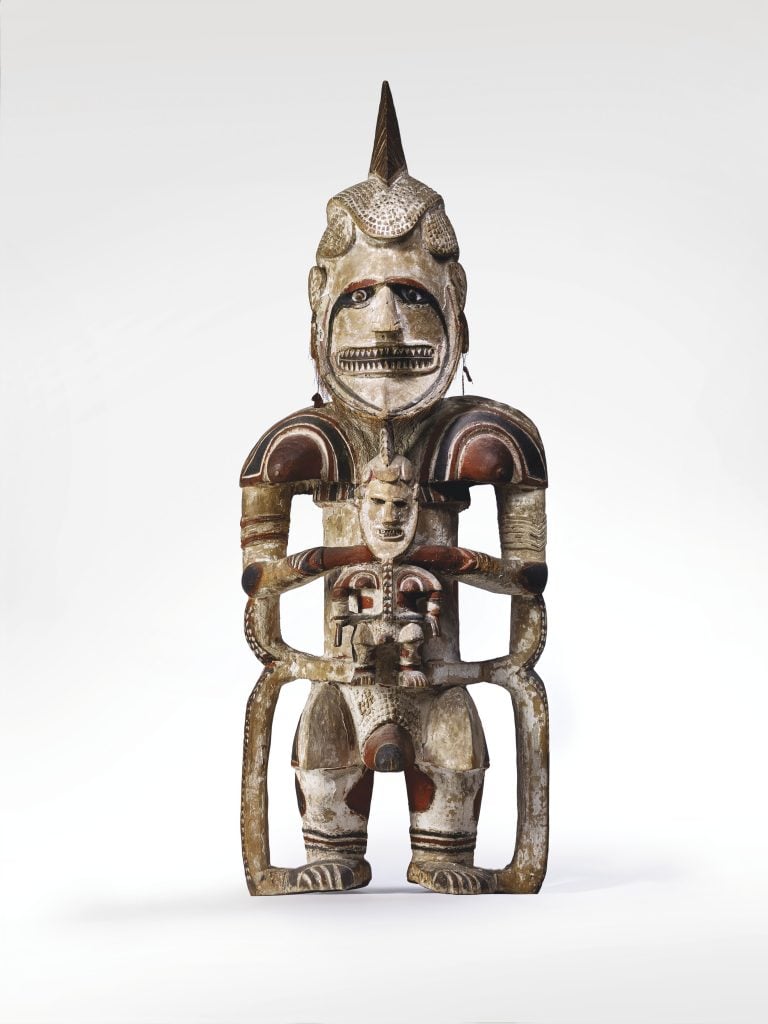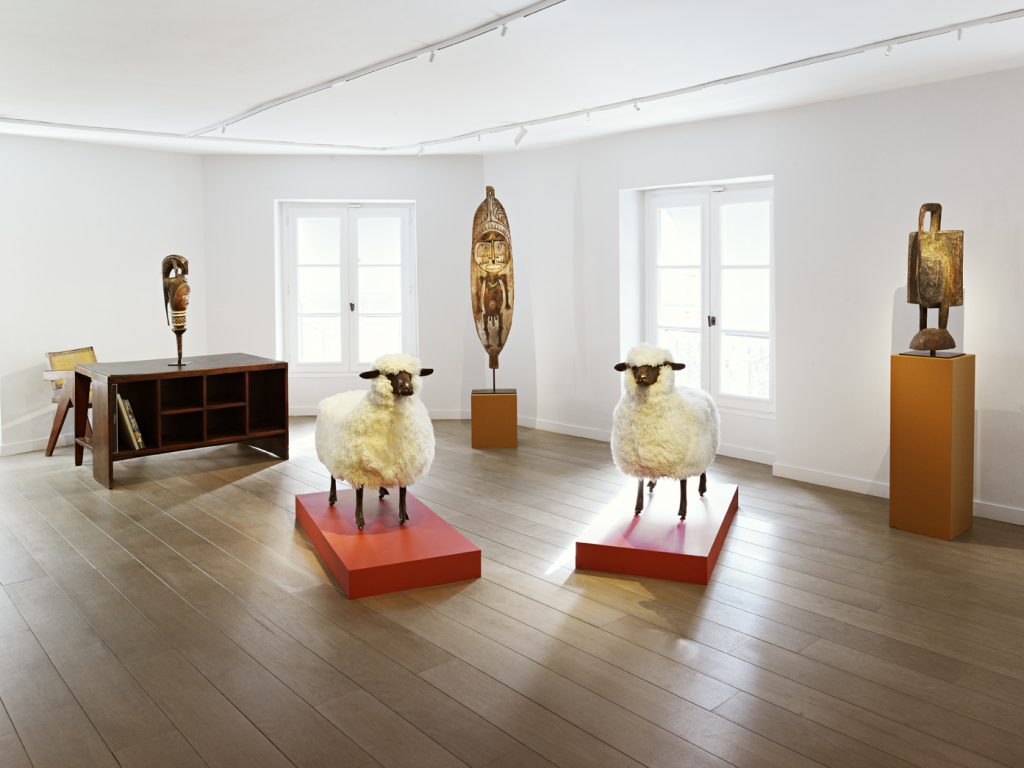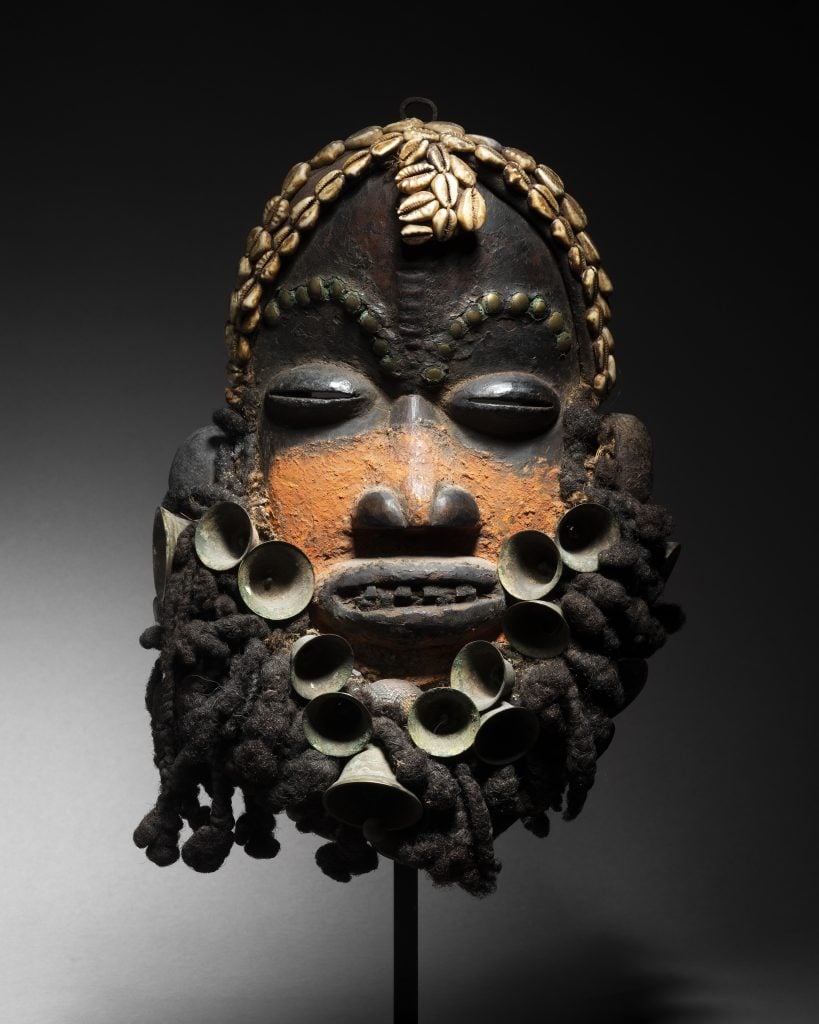Artnet News Pro
France’s Tribal Art Market Has Survived Macron’s Restitution Politics. Can It Survive the Changing Tastes of a New Generation?
Dealers are focused on attracting younger collectors more interested in design and contemporary art.

Dealers are focused on attracting younger collectors more interested in design and contemporary art.

Anna Sansom

After French President Emmanuel Macron decided to restitute 26 bronze artifacts plundered from Benin during the colonial era, uncertainty lingered about how this would impact France’s leading position in the market for classical African, Oceanic, and American art.
This week, Christie’s dashed concern about how this might affect private collecting, as it reported its “highest annual turnover” for the category totaling €73.3 million ($82.9 million). This was largely thanks to the sale of the collection of late French dealer Michel Périnet in June, which generated €66.1 million ($74.6 million), and its category auction on December 2 fetching €6.2 million ($7 million).
These results would indicate that Paris shall keep its reputation as the historical center of this market, even as a new generation of collectors emerges with differing tastes from the Baby Boomers that cemented it. However, while the market is robust for rare, quality pieces, small-scale objects of minor importance struggle to find buyers.

Uli Statue, Aire Mandak, New Ireland, Bismarck Archipelago, Papua New Guinea. Image courtesy Christie’s Images Ltd. 2021.
“Our sales in 2021 have been very successful with a combined sell through rate of 91 percent sold by lot and 99 percent by value,” Alexis Maggiar, Christie’s specialist of African and Oceanic art, told Artnet News. “While the Michel Périnet Collection has entered art market history, the remarkable results of December 2 show the strength of the market and underline the passionate expertise of our team, offering exceptional pieces. Paris is the historical market place and the exceptional results achieved are a clear demonstration of its attractiveness.”
The December sale sold 73 percent by lot, led by an Uli statue, Aire Mandak, from Papua New Guinea that fetched a within-estimate €1.8 million ($2 million) (final prices include buyers’ premium, but presale estimates do not). The piece had impressive provenance, having once belonged to the Linden-Museum Stuttgart, leading tribal art dealers Roberta and Lance Entwistle, and then collectors Nancy and Murray Frum. The result exemplifies the increasing interest in Oceanic art over the last few years. According to a recent report published by Artkhade, Oceania was the second-highest grossing region for tribal arts last year (after Africa but ahead of the Americas and Asia). Next came a Ndoma Baulé mask, attributed to “Master Rubinstein,” from Ivory Coast which more than tripled its €300,000 ($338,000) low estimate to fetch €920,000 ($1 million), affirming the ongoing attraction of masks.
“The Uli figure is an icon of Oceanic art and one of the last masterpieces from New Ireland still in private hands while the Baulé mask is a rediscovered masterwork, unseen on the market and is exactly what top collectors are looking for: quality, rarity and beauty,” Maggiar said. Christie’s presented the sale alongside its design sale, attracting collectors from 23 countries. This curatorial, cross-category approach is aligned with a strategy launched a few years to juxtapose tribal art with contemporary and modern art and design to lure new collectors and stimulate their curiosity.
Asked about the impact of the restitution of Benin bronzes from the Musée du Quai Branly-Jacques Chirac on the market, Maggiar replied: “no impact.” Other experts interviewed by Artnet News further opined that the market for pieces that were traded legitimately rather than looted has not been adversely affected.

Galerie Lucas Ratton, Exhibition Lalanne May–June 2021. Photo © Aurelien Chauvaud.
The Sotheby’s sale on November 30 delivered a moderate total of €2 million ($2.3 million), on the lower end of its pre-sale estimate of €2 million–€3 million ($2.3 million–$3.4 million), with just 42 percent of lots attracting buyers. The top lot was a Sénufo tugubele figure from Ivory Coast, which sold for €339,200 ($382,669), exceeding its €180,000 ($203,065)upper estimate, followed by a Songye headrest from the Democratic Republic of Congo, which fetched a within-estimate €252,000 ($284,291). Sotheby’s declined to comment on the results.
The fact that unimportant pieces failed to find buyers is reflective of how the market is shifting demographically and generationally, believes Nicolas Rolland, a Left Bank tribal arts dealer. “The Baby Boomers who were very passionate about collecting works from the African continent in the 1970s and 1980s, and went to all the fairs and galleries and read widely, are now old or deceased, and the people entering the market have a more superficial or aesthetic approach,” he said.
“They might have the means to buy a work that’s very expensive for their living room but don’t collect beyond that in a traditional sense. Pieces at a very high level are selling for big sums whereas historical yet unexceptional pieces are falling [in value].” Rolland also observed that the market is expanding with collectors becoming more international. “One couldn’t have imagined 10 years ago to be selling primitive arts to collectors in Thailand,” he said.
Lucas Ratton, who also owns an eponymous gallery in the Left Bank where Parisian tribal arts dealers are congregated, offers another view on how the market is evolving. “There are more collectors of contemporary art and modern paintings who want to discover new things and are looking for works that will resonate with what they already have,” he said. Just as the auction houses present tribal arts alongside contemporary art and design in order to attract more collectors, Ratton has juxtaposed tribal art with design pieces by François-Xavier Lalanne and paintings by Pierre Soulages. Brushing away concern about the restitution debate, he quipped: “It’s a political issue that created a buzz and a moment of uncertainty, but one shouldn’t be reductive because it doesn’t reflect the reality of the market.”

Dan/We Mask, Ivory Coast. Image courtesy Binoche et Giquello.
The expert Alain de Monbrison also pointed to the different tastes of less erudite collectors with broader interests. “New collectors are looking for sculptures and classical works of a certain dimension that are similar to modern and contemporary art and that relate to an aesthetic like Giacometti’s,” he said. This trend is having a negative effect on other pieces on the market, however. “Small refined, nicely patinated objects that interested the older generation appeal less to new collectors,” Monbrison added.
Monbrison has collaborated on the forthcoming sale Arts of Africa, Americas and Oceania: Collection of Sam and Lilette Szafran and diverse connoisseurs organized by Binoche et Giquello, taking place at Hôtel Drouot on December 17. Referring to some of the small-scale objects that the late painter Sam Szafran collected, Monbrison said: “Sam Szafran bought them because he liked them but they’re not in fashion today.”
One of the pieces expected to perform well is a “prestigious Luba adze, Kibiki or Kasolwa” piece of regalia from the Democratic Republic of Congo that had been “collected” by Commander Charles Liebrechts in 1886. Estimated at €100,000–€150,000 ($113,000–$169,000), It exemplifies how works by tribes from the Democratic Republic of Congo, Gabon, Ivory Coast and Senegal remain popular despite the controversy about how some of them left the African continent.
On the Left Bank, one dealer who has been modernizing his way of working in order to attract younger collectors is Julien Flak, director of Galerie Flak. Today he launched the third edition of Art View Space with 10 other galleries specializing in contemporary and modern art as well as ancient art and design. The curated online viewing room shows an eclectic, highly heterogeneous vision intermingling styles and epochs. To reach his new collectors, Flak has been using social media networks and conversing on FaceTime and WhatsApp during the pandemic. “Perhaps we have even more collectors aged 30 to 50 years old than before,” Flak said about the “generational renewal” of the market.